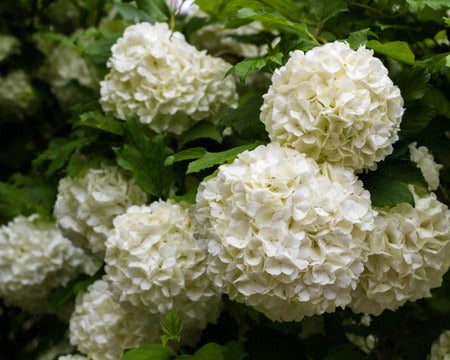Flowering shrubs are plants and small trees that go the extra mile by providing a splash of color during their blooming season. They can serve as borders that add depth, like an evergreen shrub, or as a bold accent piece in landscaping. Explore our selection of plants at TN Nursery to find the next addition to your backyard.
A beautiful garden consists of different elements that harmonize to create a visual interest in the landscape. When discussing these elements, you may think of vibrant flowers, ornamental grass, climbing vines, and fruit trees. But there is this one element you may be forgetting that can truly transform your entire garden's appearance: flowering shrubs.
Flowering Shrubs Are Great For The Ecosystem
Flowering bushes or shrubs play an essential part in the garden's ecosystem. From creating a habitat for wildlife to thrive to improving the overall air quality of the space, shrubs offer numerous benefits. Additionally, they are straightforward to care for and can thrive when planted with other plants and trees.
At TN Nursery, you can buy flowering shrubs for different landscaping situations. Planting them strategically will add biodiversity, beauty, and structure to your yard or garden.
Featured Flowering Shrubs
Whether looking for shrubs that grow vibrant red, pink, or lilac blooms or want a more subtle option, TN Nursery caters to gardeners with different requirements. In our featured collection, you will find the most popular flowering shrubs for sale that are commonly planted for their numerous benefits.
The Lilac Shrub is a deciduous plant with small, lilac-colored, four-petalled flowers. This shrub is known for its highly fragrant flowers, striking appearance, and various benefits in landscape design. When planted with other plants and trees, the Lilac Shrub creates a sensory experience, making it an ideal addition to any garden.
Flowering Shrubs Are Fast Growing
Forsythia is a fast-growing, robust deciduous shrub with bright yellow blooms. It can rise to 10 feet tall and has beautiful upright branches, perfect for adding elegance to any space.
TN Nursery also offers other flowering bushes for sale, including Old Fashion Snowball, Twilight Crepe Myrtle, and Flowering Dogwood Trees. Choose shrubs native to your region to mature in the right conditions.
Flowering shrubs are ideal for anyone wanting to add beauty and texture to their landscaping. These species are the perfect additions to any garden because of their vibrant colors and ability to survive even in harsh climates.
Being larger than conventional flowers, they have more resources to draw on when times get tough, allowing them to bloom for longer and make your beds more attractive. Use these when covering large areas with fragrant species or creating eye-catching focal points that last for many years. Flowering shrubs are relatively low-maintenance compared to most other garden plants.
These species require relatively little input from you while attracting numerous pollinators, including bees and butterflies, adding biodiversity to your outdoor spaces. From the delicate petals of the lilac to the spherical blooms of the Chinese Snowball Bush, you can find shrubs that meet your climatic and aesthetic requirements all in one place. Get shrubs that produce shades of red, yellow, pink, orange, and blue, suiting every theme and preference.
Flowering shrubs are especially useful in parts of your garden prone to soil erosion. Their deep roots help to hold banks in place for years, preventing them from slipping and reducing surface run-off after rain storms. This property makes them especially helpful in dry climates prone to sudden flooding. Roots penetrate deep into the soil below, anchoring it to nearby rocks and preventing sandy dirt from being swept away.
Most flowering shrubs require a minimum of care and remain resilient, even during harsh climates. These plants add to the overall well-being of your garden, especially when combined with other species from different categories. For example, you could combine the fragrant flowers of the Witch Hazel, which blooms in late winter, with the White Dogwood Tree, which flowers at other times of the year, keeping your outdoor spaces looking stunning in every season.
Discover our collection of flowering shrubs for your garden that add pops of color and keep your beds looking vibrant, even in the depths of winter.
